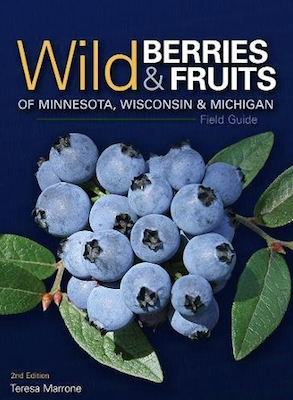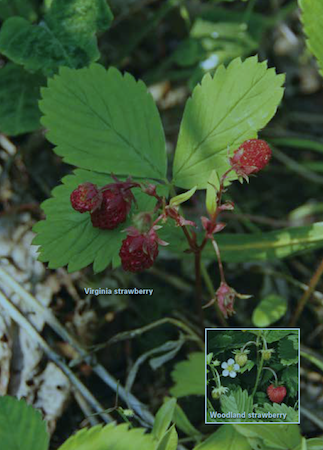How to Forage for Wild Strawberries
 Today, Teresa Marrone, author of Wild Berries & Fruits Field Guide of Minnesota, Wisconsin, and Michigan, shares with us where to look for wild strawberries.
Today, Teresa Marrone, author of Wild Berries & Fruits Field Guide of Minnesota, Wisconsin, and Michigan, shares with us where to look for wild strawberries.
HABITAT: Prefers well-drained soil in full sun to part shade. Often found in rocky areas alongside rural roads, streams, and lakes, as well as in open woodlands, disturbed areas, meadows, and fields.
GROWTH: Two types of native wild strawberries inhabit our region: the Virginia or wild strawberry (Fragaria virginiana), and the less-common woodland strawberry (F. vesca). Both are erect, leafy plants 4 to 8 inches high, with white, five-petaled flowers. Because both types spread by aboveground runners (horizontal stems, also called stolons), it’s not uncommon to find a good-sized patch of wild strawberries.
LEAVES: Coarsely toothed trifoliate leaves grow at the ends of a long, fuzzy stem. The terminal tooth of a woodland strawberry leaf is longer than the surrounding teeth, while it is shorter than the surrounding teeth on a Virginia strawberry, helping distinguish the two varieties.
 FRUIT: The heart-shaped strawberry is technically not a fruit; the actual fruits are the darker seeds embedded on the surface of the swollen receptacle (the base of the flower, which is normally inside the fruit). Woodland strawberries are about 1⁄2 inch long when mature; the seeds sit on the surface of the receptacle. Virginia strawberries are slightly smaller, and the seeds are slightly embedded in depressions on the surface of the receptacle. Both are rich red when ripe. Strawberries continue to flower throughout summer, so flowers and fruit are present at the same time once the season gets going.
FRUIT: The heart-shaped strawberry is technically not a fruit; the actual fruits are the darker seeds embedded on the surface of the swollen receptacle (the base of the flower, which is normally inside the fruit). Woodland strawberries are about 1⁄2 inch long when mature; the seeds sit on the surface of the receptacle. Virginia strawberries are slightly smaller, and the seeds are slightly embedded in depressions on the surface of the receptacle. Both are rich red when ripe. Strawberries continue to flower throughout summer, so flowers and fruit are present at the same time once the season gets going.
SEASON: Strawberries flower from late spring through midsummer; tiny yellow fruits follow the flowers, swelling and ripening to a juicy red fruit a week or two later. Strawberries often produce fruit all summer.
COMPARE: Dewberries such as the dwarf raspberry have similar trifoliate leaves, but the dewberry fruit is a compound drupe. Mock strawberries have upright, round fruits with red seeds.
NOTE: Although smaller than commercial varieties, wild strawberries are sweeter and more intensely flavored, and well worth seeking.
About the author: Teresa Marrone is the author of more than a dozen outdoors-themed books, including the Wild Berries & Fruits Field Guide series (currently available for four regions of the U.S.) and a new series of mushroom ID guides. She has also written numerous cookbooks about wild foods and has been gathering and preparing wild edibles for three decades. Teresa lives in Minneapolis with her husband, Bruce, and enjoys shooting photos of mushrooms, berries, other plants, and all things wild in the area surrounding their property abutting Minnesota’s Boundary Waters Canoe Area Wilderness.
Teresa Marrone has been gathering and preparing wild edibles for more than 20 years. Let her share that experience with you!
If you enjoyed this post, sign up for our newsletter here.


